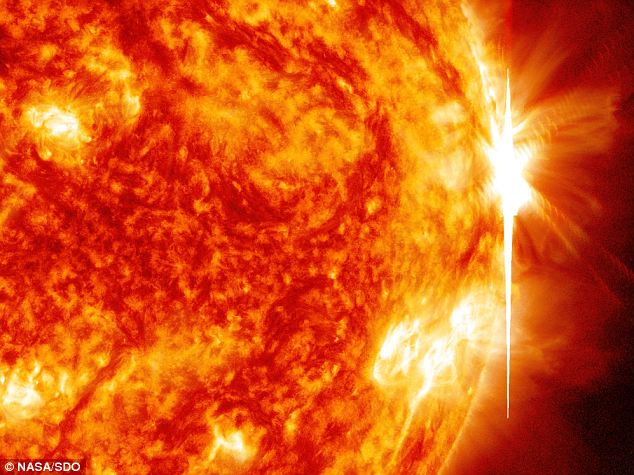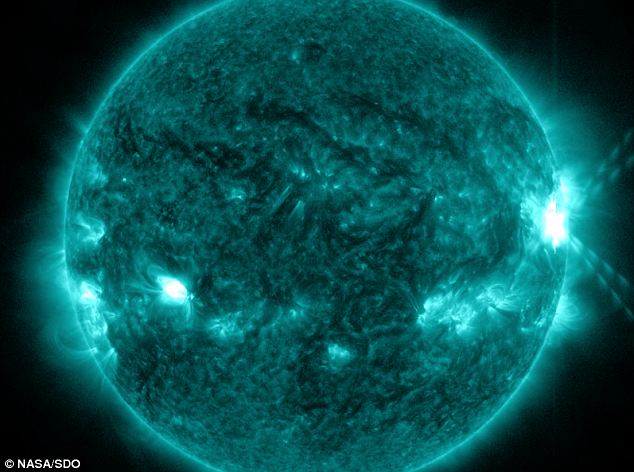
The U.S. National Oceanic and Atmospheric Administration issued four radio blackout warnings in the past two days after solar weather suddenly turned turbulent.
Radiation from flares cannot penetrate Earth's atmosphere to harm life on the ground, but when intense enough it can disturb the atmosphere in the ionosphere, where GPS and radio signals travel.
Since October 23 the Sun has let loose with 24 medium-strength M-class solar flares, and four X-class flares - the most powerful kind.
In fact, with our local star heading towards the peak of its 11-year cycle, a period known as the solar maximum, this shouldn't be unusual. But lead up to the solar max has been unusually subdued this year.
Humans have tracked the solar cycle continuously since it was discovered in 1843, and it is normal for there to be many flares a day during the sun's peak activity.
Holly Gilbert, a solar physicist at NASA Goddard Space Flight Center, told the Los Angeles Times: 'It hadn't been active in months, so it's like it finally woke up.
'For those of us who study the dynamics of the sun, it is exciting because it gives us more events to study.'
Solar flares happen when energy stored in magnetic fields twisted across the surface of the Sun is suddenly released.
'You get a tangled bunch of magnetic fields, and they get too tangled and too stressed, they end up erupting,' added Dr Gilbert.
Video of solar activity captured by NASA:
The recent solar flare activity has also been accompanied by several coronal mass ejections (CMEs), say Nasa officials.
There are another kind of solar phenomenon that send billions of tons of particles into space that can reach Earth one to three days later.
Like the radiation from solar flares, these particles cannot travel through the atmosphere to harm humans on Earth; but they can affect electronic systems in satellites and on the ground.

The CME's magnetic fields peel back the outermost layers of Earth's fields changing their very shape, distortions which can can degrade communication signals and cause unexpected surges in power grids.
They also can cause aurora. Storms are rare during solar minimum, but as the sun nears solar maximum, large storms occur several times per year.



the weakest for years. The idea there will be disruption from CMEs emitted is specious and wrong at this moment. Nothing over the last few weeks has been in any way really threatening. The DM is doing what it does best - misinform and put the fear of God into people who are ignorant of what really goes on